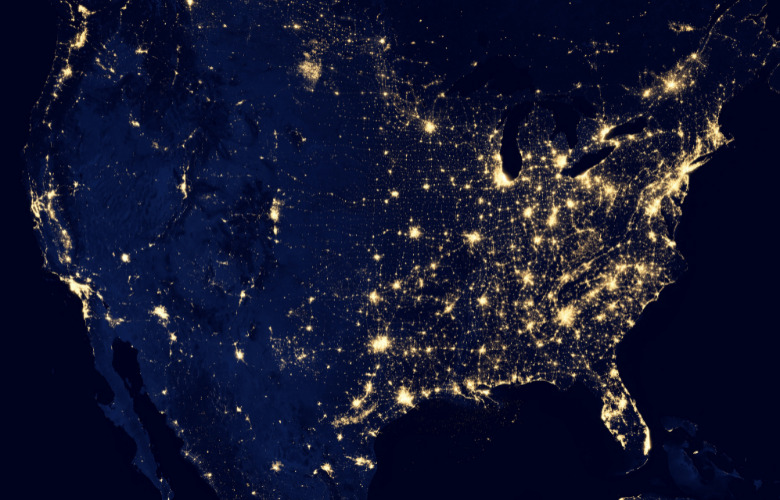
Long before Covid, theatre and performances already found their way into the digital realm. It all began with the visionary media art duo Sherrie Rabinowitz & Kit Galloway and their project Hole in Space from 1980. Measured by today’s standards it was a simple installation, making it possible for people on the East and West Coast to see each other in real time. However, beginning of the Eighties this was a sensation which widened people’s understanding of space and time.
On a November evening in 1980, unprepared pedestrians passing by the Lincoln Center for the Performing Arts in New York and The Broadway department store in Los Angeles saw something revolutionary.
Life-size moving images of people who were at the same moment on the opposite coast of the USA appeared in the shop windows.
It took the pedestrians a while to grasp that they could not only see but also hear and talk to each other as if they were in the same place – coast to coast.
Nothing like this had ever been set up before. The transmission covered a distance of 3’000 kilometers and, with the help of satellite transmission, enabled a live encounter as if you were meeting a neighbor on the same sidewalk.
It was an incredible premiere that the two visionary young media artists Sherrie Rabinowitz and Kit Galloway had staged here with their Public Communication Sculpture. Causing a sensation that in today’s age of easy data accessibility can hardly be imagined.
On the first day, there was a cautious recognition of this completely new type of live channel. Passers-by discovered that the images of the people appearing in the “magic windows” were not recorded, but that people actually appeared live and co-present there from a distance of several thousand kilometers away.
By the second day, the news had spread rapidly by word of mouth and had also reached the mainstream media. People began calling New York and Los Angeles to meet outside storefronts.
On day three, there were planned encounters between people who had not seen each other for decades.
It wasn’t the first time that Sherrie Rabinowitz and Kit Galloway (S&K) had creatively appropriated conventional media to transcend space and time.
With their Satellite Arts Project in 1977, they had brought together various artists from different parts of the USA and the world via satellite for the first time.
Back then, by combining their images and voices into a single “live” video image, so that everyone in the same virtual image space and were able to perform, sing, dance together.
To, in this way, invent a new kind of world choreography – in a place that Rabinowitz and Galloway called Image as Place and thus made the image possible as a meeting place for the first time.
Hole in Space in 1980 was another step forward in using the digital realm to stage performance art.
The US space agency NASA (National Aeronautics and Space Administration) had provided the technology, which was still unaffordable at the time and completely inaccessible to most people.
Rabinowitz and Galloway had responded to a public tender for the civil/artistic use of this technology.
The artist Nam June Paik adapted the process seven years later for works with Merce Cunningham, among others, and became world famous with it.
“We didn’t want to produce artefacts for the museum or the art market,” says Kit Galloway today. “Our approach was socio-political.”
Who would have guessed back then that, over the decades, and during a pandemic many years later, the digitalisation of the arts would grow exponentially, opening entire new avenues of creating and presenting a performance?
Original article Der Urknall on Nachtkritik.de by Martina Leeker und Esther Slevogt
Pictures © The Rabinowitz & Galloway Archives
10th UAE Ras Al Khaimah Fine Arts Festival (RAKFAF)
Exploring Up North: The Norwegian Independent Theatre Landscape


Liam Klenk was born in Central Europe and has since lived on four continents. Liam has always been engaged in creative pursuits, ranging from photography and graphic design, to writing short stories and poetry, to working in theatre and shows. In 2016, Liam published his first book and memoir, 'Paralian'.
Read Full Profile© 2021 TheatreArtLife. All rights reserved.

Thank you so much for reading, but you have now reached your free article limit for this month.
Our contributors are currently writing more articles for you to enjoy.
To keep reading, all you have to do is become a subscriber and then you can read unlimited articles anytime.
Your investment will help us continue to ignite connections across the globe in live entertainment and build this community for industry professionals.